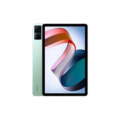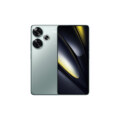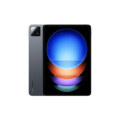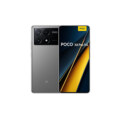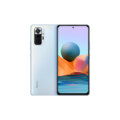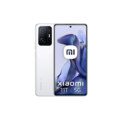Xiaomi Mi 11
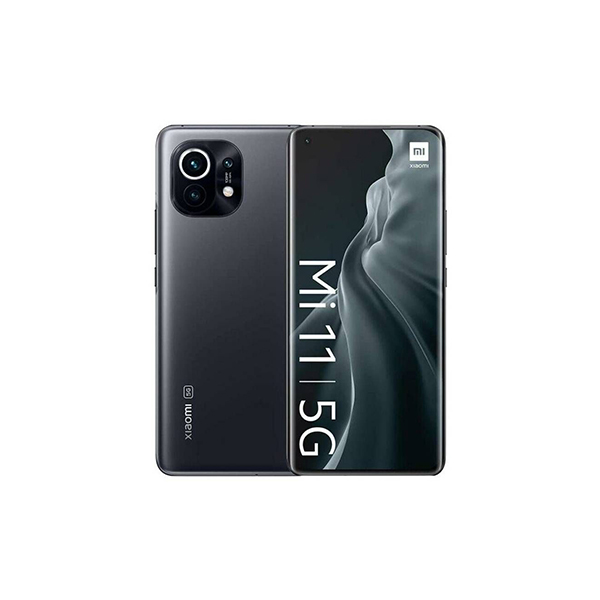

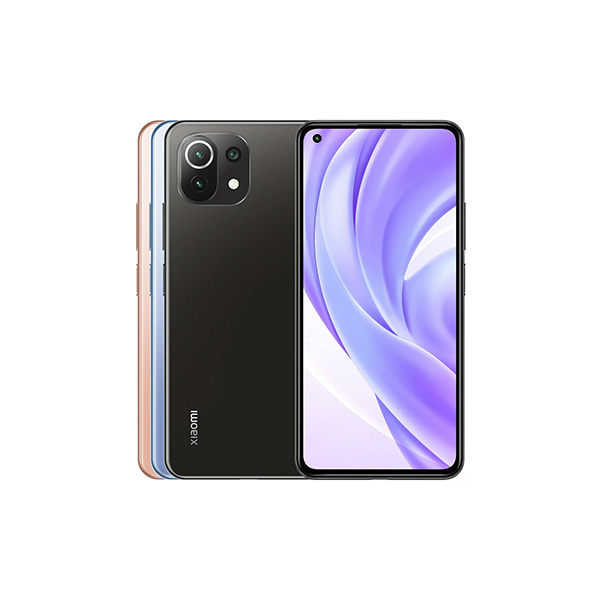

Specs
General
| Device Type | Xiaomi Redmi Phone |
| Announced | 28 December, 2020 |
| Released | 01 January, 2021 |
| Status | Available |
Design
| Dimensions | 164.3 x 74.6 x 8.1 mm (Glass) / 8.6 mm (Leather) |
| Weight | 196 g (Glass) / 194 g (Leather) |
| Protection | Glass front (Gorilla Glass Victus), glass back (Gorilla Glass 5) or eco leather back, aluminum frame |
| Colors | Horizon Blue, Cloud White, Midnight Gray, Special Edition Blue, Gold, Violet |
Display
| Refresh Rate | 120 Hz |
| Display Type Display Technology => A number of display technologies and types used in mobile phones => TFT (Thin Film Transistor), IPS (In-Place Switching), OLED (Organic Light Emitting Diode), AMOLED (Active-Matrix Organic Light-Emitting Diode), Super AMOLED (an even advanced version of AMOLED), Resistive Touchscreen (Resistive touchscreens contain two layer of conductive material with a very small gap between them which acts as a resistance), Capacitive Touchsceen (Capacitive touchscreen technology consists of a layer of glass coated with a transparent conductor) | AMOLED |
| Size | 6.81 inches |
| Resolution | 1440 x 3200 pixels |
| Display Colors Display Colors is refers to the number of different shades of colors that the screen is capable of displaying => 64K colors, 256K colors and 16 million colors, Obviously 16M is highest available range of colors and better than others. | 1 B |
| Pixel Density Pixel Density (PPI) is refers to the concentration of pixels on a particular display, measured in pixels per inch (ppi). Pixel density is calculated by dividing the diagonal pixel resolution of a display by its diagonal size, higher pixel density better display quality. | ~ 515 ppi |
| Touch Screen | Capacitive Touchscreen, Multitouch |
| Display Protection Display Protection => Gorilla Glass is a special alkali-aluminosilicate glass shield with exceptional damage resistance that helps protect mobile displays from scratches, drops, and bumps of everyday use, It is always better to go for a smartphone with Gorilla Glass for that added protection and peace of mind. | Corning Gorilla Glass Victus |
| Features | HDR10+, 1500 nits (peak) |
| Secondary Display | No |
Camera
| Front Camera | 20 MP, f/2.2, 27mm (wide) |
| Camera Setup | Triple |
| Main Camera Camera is able to capture photographs and usually videos, The most important characteristics of a camera are the resolution (measured in megapixels), lens focus type (fixed or automatic), higher megapixel cameras are known to capture higher quality photos, but not always a good measurement of the photos quality. |
108 MP, f/1.9, 26mm (wide) 13 MP, f/2.4, 123˚ (ultrawide) 5 MP, f/2.4, (macro) |
| Video | Video 8K@24/30fps, 4K@30/60fps, 1080p@30/60/120/240fps; gyro-EIS, HDR10+ |
| Camera Features | Geo-tagging, touch focus, face detection, HDR, panorama |
| Flash Flash Light => There is commonly two types of flash lights are used in camera mobile phones, LED Flash (LED flash offers lower power consumption with drive circuitry that takes up very little room, LEDs can be strobed faster than any other light source), Xenon Flash (xenon flash produces an extremely intense full-spectrum white light for a very short duration) | Dual-LED dual-tone flash |
Hardware
| Operating System OS => Every computer system run on a base software called Operating System (OS). Operating System controls all basic operations of the computer (such as smartphone, PDAs, tablet computers and other handheld devices). The Operating System allows the user to install and run third party applications (apps), apps are used to add new functionality to the device. | Android 11 |
| Chipset Chipset is a group of integrated circuits designed to perform one or a more dedicated functions, often with real time computing constraints, Popular smartphones are equipped with more advanced embedded chipsets that can do many different tasks depending on their programming. | Qualcomm SM8350 Snapdragon 888 |
| CPU CPU (Central Processing Unit) mostly known as processors, CPU processes instructions in order to carry out certain functions that make your device operate properly. Processors are often described as the brain of computers, smartphones and tablets, Smartphones and tablets rely on processors to carry out their every task, Processors are an incredibly important factor in selecting any type of computing device, including your smartphone. | Octa-core (1 x 2.84 GHz Kryo 680 + 3 x 2.42 GHz Kryo 680 + 4 x 1.80 GHz Kryo 680 |
| Architecture | 64 bit |
| Fabrication | 5 nm |
| GPU GPU (Graphics Processing Unit) is a single-chip processor designed to rapidly manipulate and alter memory to accelerate the creation of images in a frame buffer intended for output to a display, This includes things such as lighting effects, object transformations, and 3D motion. | Adreno 660 |
| RAM (Memory) RAM (Random Access Memory) is a type of computer memory that can be accessed randomly, any byte of memory can be accessed without touching the preceding bytes that allows information to be stored and accessed quickly from random locations. RAM is the most common type of memory found in computer systems, smartphones, tablets and other electronic devices. | 8 GB |
| Internal Storage Internal Storage is a data storage space (flash memory) mostly used in smartphones, tablets and other electronic devices where operating system, apps, music, photos, videos, files and other user data Is stored. | 256 GB |
| Card Slot Memory Card Slot is a special slot for inserting a memory card. Memory cards allow you to expand the phone's built-in memory, A memory card (sometimes called a flash memory card or a storage card) is a small storage medium used to store data such as text, pictures, audio, and video, for use on small, portable or remote computing devices such as mobile phones, mp3 players, digital cameras. | |
| Sensors Sensors are electronic components that detects and responds to some type of input from the physical environment. The specific input could be light, heat, motion, moisture, pressure and location, The output is generally a signal that is converted to use in computing systems, a location sensor, such as a GPS receiver is able to detect current location of your electronic device. | Accelerometer, Compass, Fingerprint (under display, optical), Gyro, Proximity |
Network
| SIM TYPE SIM (Subscriber Identity Module) is a small card that contains mobile network subscriber's account information. This allows the phone using the card to attach to a mobile network. The SIM card is most commonly associated with GSM and UMTS mobile networks. Moving a SIM card from one phone to another allows a subscriber to switch mobile phones without having to contact their mobile network carrier. SIM cards can also be used by a phone to store limited amounts of data, such as phone numbers and text messages. | Nano SIM |
| SIM Technology | Dual Sim, Dual Standby (Nano-SIM) |
| 2G Network | GSM 850 / 900 / 1800 / 1900 |
| 3G Network | HSDPA 850 / 900 / 1700(AWS) / 1900 / 2100 |
| 4G Network | LTE band 1(2100), 3(1800), 7(2600), 8(900), 20(800) |
| 5G Network | SA/NSA |
Multimedia
| FM Radio | |
| Stereo Speakers | YES |
| Loudspeaker | YES |
| Audio Jack | NO |
| Audio Features |
24-bit/192kHz Hi-Res audio Snapdragon Sound |
Connectivity
| Wi-fi Wi-Fi is a popular wireless networking technology using radio waves to provide high-speed network connections that allows devices to communicate without cords or cables, Wi-Fi is increasingly becoming the preferred mode of internet connectivity all over the world. | Wi-Fi 802.11 a/b/g/n/ac/6, dual-band, Wi-Fi Direct |
| Bluetooth Bluetooth is a wireless communications technology for exchanging data between mobile phones, headsets, computers and other network devices over short distances without wires, Bluetooth technology was primarily designed to support simple wireless networking of personal consumer devices. | v5.2 with A2DP, LE, apt-X HD, aptX Adaptive |
| GPS GPS The Global Positioning System is a satellite-based radio navigation system, GPS permits users to determine their position, velocity and the time 24 hours a day, in all weather, anywhere in the world, In order to locate your position, your device or GPS receiver must have a clear view of the sky. | dual-band A-GPS with GLONASS, BDS, GALILEO, QZSS, NavIC |
| USB | USB Type-C 2.0, USB On-The-Go |
| EDGE EDGE (Enhanced Data GSM Environment) is a wireless network technology generally considered the next step in the 2G network offers data transfer rates up to four times faster than ordinary GSM networks, Generally, EDGE is used for the purpose of wireless data transfer, such as sharing pictures and videos or browsing the Internet via a mobile phone connection. | |
| GPRS GPRS (General Packet Radio Service) is a packet oriented mobile data service on the 2G and 3G cellular communication system's global system for mobile communications (GSM), Generally, GPRS is used for the purpose of wireless data transfer, such as sharing pictures and videos or browsing the Internet via a mobile phone connection. | |
| Speed | 3G (HSPA 42.2/5.76 Mbp), LTE-A, 5G capable |
| Wi-fi Hotspot | |
| NFC NFC (Near field communication) is a set of standards for smartphones and similar devices to establish peer-to-peer radio communications with each other by touching them together or bringing them into proximity, usually no more than a few inches. |
Features
| Messaging | SMS(threaded view), MMS, Email, Push Mail, IM |
| Web Browser Web Browser => a web browser is a software application used to locate, retrieve and display content on the World Wide Web, including Web pages, images, video and other files, The primary function of a web browser is to render HTML, the code used to design or markup webpages. | HTML5 |
| Games | Built-in + Downloadable |
| Torch |
Battery
| Battery Type Battery Type => Cell phones run on various kinds of batteries depending on the manufacturer, phone size or shape and features. There are basically four types of cell phone batteries => Lithium Polymer, Lithium Ion, Nickel Metal Hydride and Nickel Cadmium. | Li-Ion (Lithium Ion) |
| Capacity Battery Capacity is a measure (typically in Amp-hr) of the charge stored by the battery, and is determined by the mass of active material contained in the battery. The battery capacity represents the maximum amount of energy that can be extracted from the battery under certain conditions. | 4600 mAh |
| Placement | Non-removable |
| Wireless Charging Wireless Charging (Inductive Charging) uses an electromagnetic field to transfer energy between two objects. This is usually done with a charging station. Energy is sent through an inductive coupling to an electrical device, which can then use that energy to charge batteries or run the device. | No |
| Extra |
55W wired, PD3.0, QC4, 100% in 45 min (advertised 50W wireless, 100% in 53 min (advertised) 10W reverse wireless |
Xiaomi Mi 11: Detailed Review
Introduction: The Xiaomi Mi 11, launched in early 2021, is Xiaomi’s flagship smartphone that introduced several innovations in performance, display technology, and camera prowess. As one of the first devices to feature Qualcomm’s Snapdragon 888 chipset, the Mi 11 aims to deliver a premium experience at a competitive price point. This review will cover the Xiaomi Mi 11’s design, display, performance, camera system, battery life, software experience, and highlight its pros and cons.
Specifications at a Glance
- Display: 6.81-inch AMOLED, WQHD+ (3200 x 1440), 120Hz refresh rate, HDR10+ support
- Processor: Qualcomm Snapdragon 888
- RAM: 8 GB or 12 GB
- Storage Options: 128 GB, 256 GB
- Rear Cameras: Triple-camera setup (108 MP wide f/1.9, 13 MP ultra-wide f/2.4, 5 MP macro f/2.4)
- Front Camera: 20 MP (f/2.2)
- Battery: 4,600 mAh with 55W wired fast charging, 50W wireless charging
- Operating System: MIUI 12 based on Android 11 (upgradeable)
- Dimensions: 164.3 x 74.6 x 8.1 mm
- Weight: 196 grams
Design and Build Quality
Aesthetics:
- Premium Look and Feel: The Xiaomi Mi 11 has a sleek design with a glass front and back, coupled with an aluminum frame, exuding premium quality. The Gorilla Glass Victus on the front enhances durability, while the curved edges give it a modern look.
- Color Options: Available in vibrant colors like Horizon Blue, Cloud White, and Midnight Gray, along with special edition options like the Vegan Leather.
Durability:
- Gorilla Glass Victus: The front is protected by the latest Gorilla Glass Victus, making it highly resistant to drops and scratches.
- No IP Rating: One downside is that the Mi 11 lacks official IP certification for water and dust resistance, a feature commonly found in flagship phones.
Ergonomics:
- Slim and Lightweight: Despite its large display, the Mi 11 is comfortable to hold, thanks to its thin profile and weight distribution.
- In-Display Fingerprint Sensor: The under-display fingerprint sensor is fast and accurate, providing easy unlocking and added security.
Overall: The Xiaomi Mi 11 offers a premium and stylish design that looks and feels flagship, though it lacks an official IP rating for water resistance.
Display
Specifications:
- Size: 6.81-inch AMOLED display
- Resolution: WQHD+ (3200 x 1440 pixels, 515 ppi)
- Refresh Rate: 120Hz adaptive refresh rate
- Brightness: Peak brightness of 1500 nits
- Color Gamut: HDR10+ support and TrueColor technology
- Protection: Corning Gorilla Glass Victus
Performance:
- Vivid and Sharp: The WQHD+ AMOLED panel delivers stunning visuals with vibrant colors, deep blacks, and sharp details. Its high resolution makes text and images appear crisp.
- 120Hz Smoothness: The adaptive 120Hz refresh rate ensures smooth scrolling, gaming, and animations, while also preserving battery life by adjusting the refresh rate based on the content.
- HDR Performance: The display excels in HDR content with impressive contrast and brightness, making it ideal for watching movies or viewing HDR photos.
- Brightness Levels: With a peak brightness of 1500 nits, the Mi 11’s display remains legible even in bright sunlight.
Overall: The Mi 11 boasts one of the best displays in its category, offering a high-refresh-rate, high-resolution AMOLED panel that delivers an immersive viewing experience.
Performance
Hardware:
- Processor: Qualcomm Snapdragon 888 chipset
- RAM: 8 GB or 12 GB LPDDR5 RAM
- Storage: 128 GB or 256 GB UFS 3.1 (non-expandable)
Performance Evaluation:
- Top-Tier Performance: The Snapdragon 888 ensures that the Mi 11 handles everything from gaming and multitasking to video editing with ease. It is one of the fastest smartphones in the market.
- Efficient Power Management: Despite its powerful hardware, the Mi 11 is efficient, balancing performance and battery life well, thanks to its 5nm architecture.
- Gaming Performance: Games like PUBG Mobile and Genshin Impact run smoothly at high settings, with no noticeable lags or stuttering.
Benchmark Scores:
- Geekbench 5: The Xiaomi Mi 11 scores around 1,135 (single-core) and 3,850 (multi-core), putting it among the top-performing smartphones.
Overall: The Xiaomi Mi 11 delivers flagship-level performance, making it a powerhouse for any task, including gaming, multitasking, and productivity.
Camera
The Xiaomi Mi 11 comes with a versatile triple-camera setup that excels in most conditions, especially daylight photography.
Rear Cameras:
- Main Sensor: 108 MP wide-angle lens (f/1.9) with OIS
- Ultra-Wide Sensor: 13 MP ultra-wide-angle lens (f/2.4) with a 123° field of view
- Macro Lens: 5 MP telephoto macro lens (f/2.4)
Front Camera:
- Resolution: 20 MP (f/2.2) selfie camera
Camera Performance:
- Daylight Photography: The 108 MP main sensor captures incredibly detailed and vibrant shots, with excellent color accuracy and dynamic range.
- Low-Light Photography: Night Mode enhances the performance of the main and ultra-wide lenses, producing clear and sharp images even in dim lighting.
- Ultra-Wide Lens: The 13 MP ultra-wide sensor is great for landscape shots, offering good detail, though there’s some distortion at the edges.
- Macro Shots: The 5 MP macro camera delivers decent close-up shots, though it’s more of a niche feature.
- Video Recording: The Mi 11 can record 8K videos at 24fps and 4K at 60fps, with excellent stabilization thanks to OIS.
Overall: The Xiaomi Mi 11’s camera system is highly capable, especially the 108 MP main sensor, delivering high-quality photos and videos in most scenarios.
Battery Life
Specifications:
- Capacity: 4,600 mAh
- Charging Options: 55W wired charging, 50W wireless charging, 10W reverse wireless charging
Performance:
- All-Day Battery Life: The Mi 11 can easily last a full day of moderate to heavy use, including gaming, browsing, and media consumption.
- Fast Charging: With 55W wired charging, the Mi 11 charges from 0 to 100% in just over 45 minutes. The 50W wireless charging is nearly as fast, making it convenient for users who prefer wireless options.
- Reverse Charging: The 10W reverse wireless charging allows you to charge other devices, such as earbuds or wearables.
Overall: The Xiaomi Mi 11 offers solid battery life with super-fast charging capabilities, ensuring minimal downtime.
Software
Operating System:
- Original OS: MIUI 12 based on Android 11 (upgradable)
User Experience:
- MIUI Features: Xiaomi’s MIUI 12 skin adds a lot of customizations and features, including Super Wallpapers, AI-based battery management, and privacy controls. While feature-rich, MIUI can feel a bit bloated with pre-installed apps.
- Performance Over Time: The Snapdragon 888 ensures that the Mi 11 remains smooth and responsive even after prolonged usage, and Xiaomi has been improving software updates and stability.
- App Compatibility: The Mi 11 is compatible with all Android apps, leveraging its powerful hardware for intensive tasks like video editing and gaming.
Overall: MIUI 12 is feature-packed, though some users may find it too cluttered. Performance remains snappy, and the software offers plenty of customization.
Pros & Cons
Pros:
- Top-Notch Performance: Powered by the Snapdragon 888, the Mi 11 delivers fast and reliable performance for all tasks.
- Stunning Display: The WQHD+ AMOLED display with a 120Hz refresh rate offers an immersive and vibrant viewing experience.
- Excellent Camera System: The 108 MP main camera produces detailed and vibrant images, while the ultra-wide and macro lenses add versatility.
- Fast Charging: The 55W wired and 50W wireless charging are among the fastest in the market, minimizing downtime.
- Premium Design: The Mi 11’s sleek design and Gorilla Glass Victus make it both stylish and durable.
Cons:
- No IP Rating: The lack of an official IP rating means the Mi 11 isn’t water or dust resistant.
- No Telephoto Lens: The absence of a telephoto lens limits zoom capabilities, which some users may miss.
- MIUI Bloatware: While feature-rich, MIUI 12 can feel cluttered and comes with pre-installed apps that may be unnecessary.
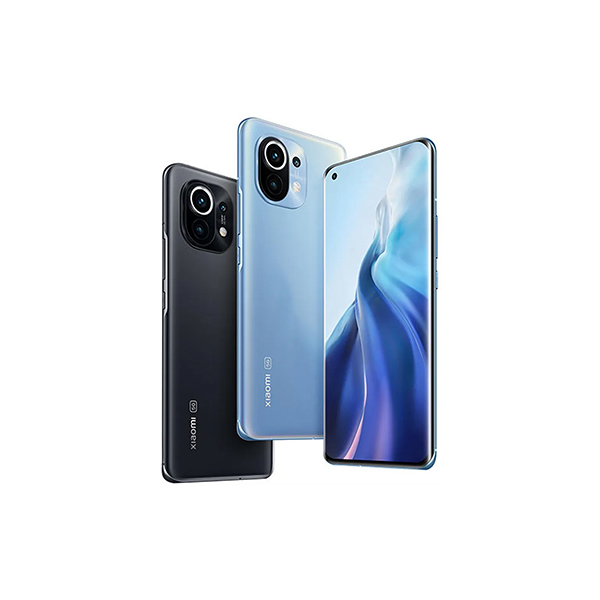
Conclusion
The Xiaomi Mi 11 is a flagship smartphone that excels in display quality, performance, and camera versatility, offering excellent value for money. With its powerful Snapdragon 888 processor, WQHD+ AMOLED display, and fast charging, the Mi 11 delivers a premium experience at a more affordable price compared to other flagships. While it lacks
Review
Disclaimer Note
All prices in Pakistan is updated daily from the price list provided by local shops and dealers but we can not guarantee that the information / price on this page is 100% correct (Human error is possible), always visit your local shop for exact cell phone cost & rate.

